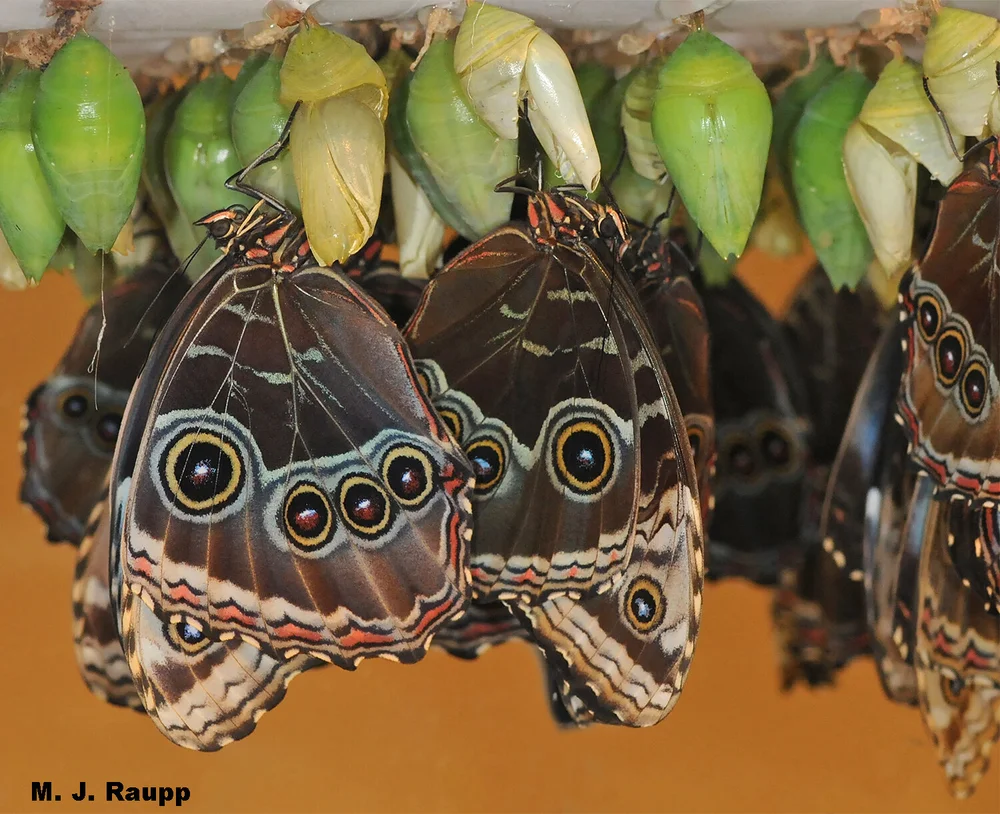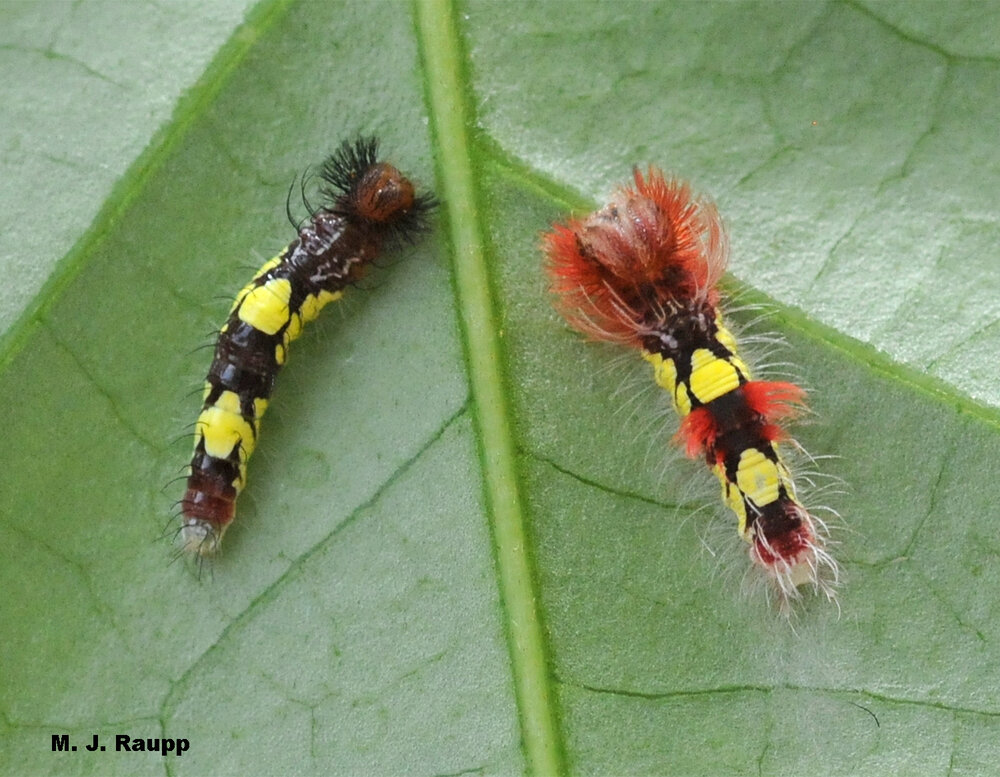Corona got you blue? Here’s a ‘blue’ to cheer you up: blue Morpho butterfly, Morpho peleides

Bold scary eyespots adorn the lower surface of the Morpho’s wings.
Cabin fever, dreary weather, and a scary virus; let’s get out of town and take another visit to the magical tropical rainforests of Costa Rica, home of raucous cicadas, fungus farming ants, marauding army ants, and mutualistic ants guarding trees. While hiking along a winding gravel road, I was spellbound by a parade of beautiful Morpho butterflies, fancy fliers who also found the rugged thoroughfare a fine fairway through the rainforest.
The iridescent burst of blue color, the signature of the blue Morpho, is produced by the physical structure of tiny scales covering its wings. A multitude of thin layers of insect cuticle comprising each scale reflect only certain wavelengths of light to produce the shimmering display of blue as the butterfly dances through the forest. The ‘flash and vanish’ pattern of flight that Morphos display is startling indeed, and likely difficult for would-be predators to track. This form of physical coloration contrasts with other forms of color we see in insects. In many insect species color is produced by storing pigments in their exoskeleton. This mode of color production is employed by critters such as milkweed bugs and Asian multicolored ladybird beetles.
Basking in the sunshine, the blue Morpho is easy to see, but in the wild a clever ‘flash and vanish’ flight pattern makes it difficult for a predator or bug geek to track this gorgeous butterfly.

Within chrysalises, Morpho caterpillars transform into beautiful adults.
In addition to this startling display of color, the blue Morpho has evolved another clever strategy for dealing with predators. Intricate patterns of scales on the underside of their hind wings create an illusion of large staring vertebrate eyes complete with pupils and irises. It is thought that these intricate eyespots are used by the butterfly to startle or otherwise confuse hungry predators such as birds or lizards. Studies have shown that the more closely the pattern resembles an eye, the more likely a predator is to be deterred by the ruse. Another theory suggests that the false eyespot may draw the attack of a predator away from a vital body part, such as head or abdomen, to a less vital area such as the end of a wing. How well this works is known for certain only by the butterfly and its predators.
A busy proboscis laps nutrients from rotting fruit, one of the preferred foods for many butterflies including the blue Morpho.

Brightly colored Morpho caterpillars bear tufts of long hairs.
Fermenting fruit is one of the favorite foods of adult Morpho butterflies, but adults can also be found dining on sap fluxes on tree trunks, minerals at mud puddles, and nutrients from dung. Like other members of the butterfly clan, Morpho butterflies possess a long proboscis that uncurls to lap up liquid nutrients. Morpho caterpillars have chewing jaws that remove tissue from the leaves. More than 20 species of Morpho butterflies are found in the new world tropics and their larvae eat a wide variety of host plants ranging from blades of grass to leaves of legumes. Morpho butterflies, one of Mother Nature’s most fascinating creations.
Acknowledgements
Information for this episode came from the wonderful Featured Creature web site “Common name: blue morpho butterfly, scientific name: Morpho peleides Kollar (Lepidoptera: Nymphalidae)” by Haleigh A. Ray and Jacqueline Y. Miller. To learn more about Morpho butterflies, please visit that website. Several images used in this episode were taken at the McGuire Center for Lepidoptera and Biodiversity of the University of Florida. We also thank Costa Rica Vacations, and the intrepid guides Mono and Kenneth at Rafiki Lodge, and Ale and Gera at Playa Cativo Lodge, for providing the inspiration for this episode.
Please stay safe at home as much as possible, but escape every now and then on adventures with Bug of the Week.
This post appeared first on Bug of the Week